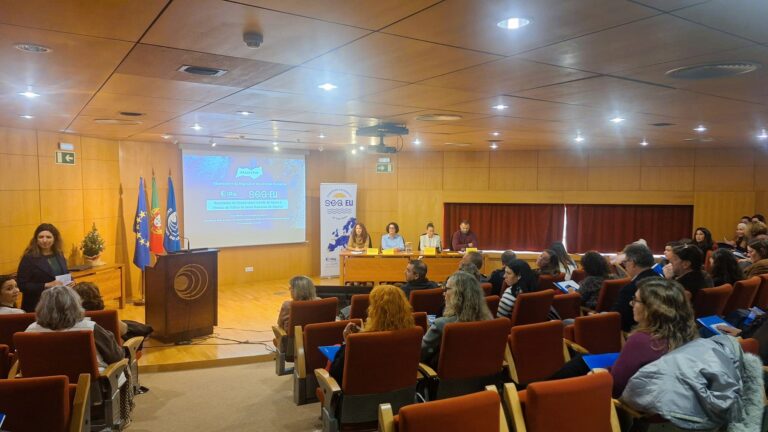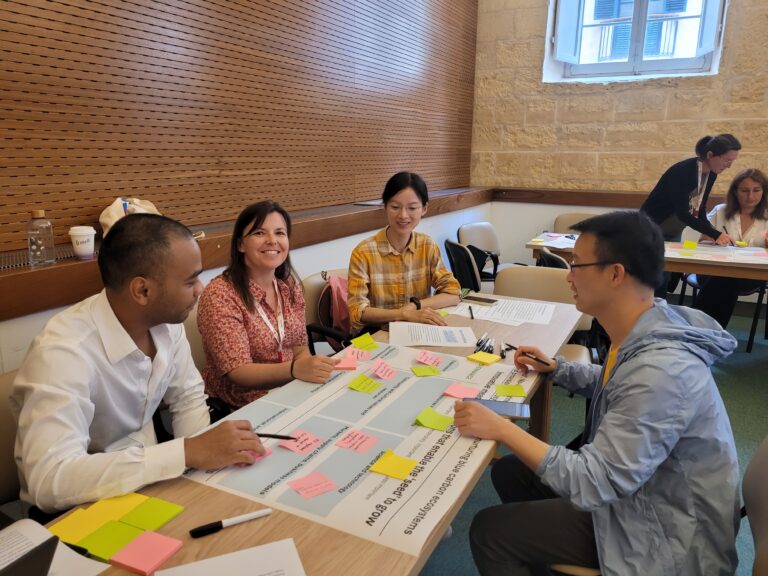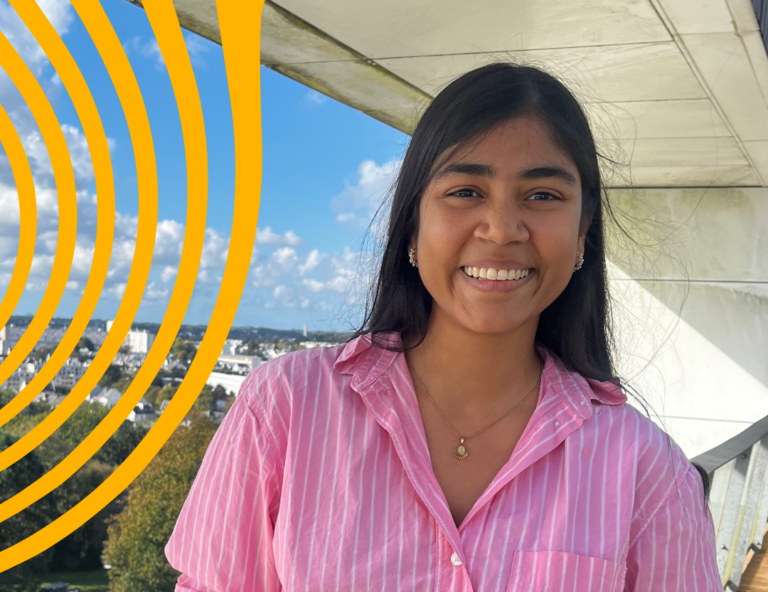Across SEA-EU people are working together to shape the future of higher education in Europe. Students at all nine partner universities are having their say too about how they want to see the future of campus life. The Student-Led Projects initiative launched at the beginning of 2024 encouraged students to put their ideas for a more diverse, inclusive, greener and connected future to the test. “With this initiative we wanted to bring students to the table,” says project coordinator Giovanna Putortì from the University of Kiel. “By offering students the support and platform to make connections across Europe, we hope they will not only have the chance to develop novel and creative ideas for the future of education in Europe, but also establish networks and make experiences that will build important cornerstones of their career and our shared educational landscape.”
In the first round of the initiative nine projects were successfully funded, each involving collaboration partners from different SEA-EU partners. The organising team fostered the meeting of minds and structuring of projects by supporting the project leaders with regular check-ins and providing advice. “We do not expect them to already have international networks, so it’s important we provide a platform and events like our networking webinar where they can meet each other and brainstorm first ideas. We also provide advice related to how to administer and manage funds and project deliverables etc. within a university context, all of which is daunting for the first time!” she adds.
From research on invasive species in the Mediterranean Sea, to webpages and online tools challenging perceptions around disability and identity, the first cohort of students delivered a vast range of projects and creating a wealth of data, results and experiences that surprised even themselves.
The Power of Collaboration
“A key takeaway from this experience is the power of collaboration,” says Milena Nowaczewska from the University of Gdansk, whose project “Breaking Barriers, Building Barriers” created a centralised hub for students to access resources and build networks for academic and extracurricular endeavours. “We’ve learned that when people from various backgrounds and disciplines unite, they can create solutions that are far more innovative and meaningful than any one group could achieve alone. And that together we can actually achieve more, and the border should not limit us from being able to do anything” added Milena’s partner Nikola Jagaczewska also from the University of Gdansk.
Others agree. “Collaborating with my partner enhanced our results, as his fieldwork provided valuable insights for my lab analyses,” says Eugenio Geremia from the University of Naples, whose research project aims to identify new bioindicator organisms of climate change, focussing on the Invasive Alien Species, the pearl oyster Pinctada radiata as a potential indicator for changes in the ocean environment. “I also learned the importance of effectively communicating our findings to the community by creating simple visuals that made complex information more accessible.”
Different Perspectives for more Creativity
The creative book project “MedVoyAge” combines compelling storytelling, visuals and interactive components to invite readers of all ages to explore the beauty and challenges faced by the Mediterranean Sea. “This project has not only brought my teenage dream to life but has taught me the value of collaboration and creativity in making scientific knowledge accessible and captivating,” says Alessio Marrone from the University of Malta. “I was motivated by a desire to shed light on the complex and often overlooked habitats that make the Mediterranean so unique, but with an approach that would demystify the science, making it accessible and enjoyable for everyone. Our collaboration was both challenging and exciting, as we sought to balance scientific accuracy with the simplicity and thrill we wanted to convey visually, he adds of the collaboration with his project partner Franscesco del Re from the University of Naples who created the illustrations to Alessio’s storytelling.
Creativity and self-expression as an inclusive and collaborative methodology
Creativity and self-expression are reoccurring themes of the projects as the nature of the Student-Led Projects initiative creates a playground for exploring novel ideas. The project leaders of the “Buddies Experiments” project share a belief that artistic expression can be a bridge for creating human connections. “We wanted to break down barriers of self-doubt and open pathways for participants to explore themselves creatively in a safe, inclusive environment,” explains Aspasia Marmaritsaki from the University of Malta. Their project aims to create an adaptable methodology that can be used as a tool for students and researchers, encouraging integration of movement and sound in creative research to foster inclusivity within educational and collaborative settings. “The most rewarding part of the experience was witnessing the transformation in participants,” Marmaritsaki says. “Seeing them gradually release these limitations and express themselves openly and joyfully was incredible. The feedback participants gave, sharing that they felt welcomed, inspired, and more connected, reassured us that we were creating something genuinely impactful. Their breakthroughs highlighted the importance of nurturing a positive, playful atmosphere where everyone’s unique background could contribute to the collective experience.”
Exploring identities
With the project “The Mind Behind” Kiel Student Ann-Marie Schupp wanted to challenge preconceived ideas about identity. “The Mind Behind seeks to draw attention to the imposed identities that we might come to believe if we’re not careful,” Schupp says. “I hope to create a space where we realize that we cannot recognize everything and where people can free themselves from the self-oppression caused by the distorted reflections of society.” Via an interactive webpage consisting of multimedia elements, the Mind Behind aims to liberate individuals affected by discrimination from identities imposed on them by stereotypes. Schupp hopes interaction with the webpage will make the individual’s identity recognizable, allowing them to distance themselves from their experiences and begin breaking down prejudices and unconscious biases. “Many people feel unheard, and we tend to judge faster and more unconsciously than expected. Realizing this about myself and gradually freeing myself from judgments towards myself and others has been a significant highlight. I am, in a way, the test subject for my project and hope to implement it in a way that works for others as well“ Schupp concludes.
The Media Nord Podcast also creates an inclusive and safe space for media studies students based at NORD University to engage with professionals from media industries to discuss issues of diversity and gender equality, sustainability and climate equity as well as other important societal challenges. “We believe this is a valuable space for exchange of ideas and reflections,” says project leader Jesica Valeria Ramirez who adds they want to keep the podcast running in the future. “We are students seeking to create a healthy campus for all the members of our student community. Furthermore, we are the future workers of the industry and we are ready to join or create better democratic workspaces in the years to come.”
Advocation and Impact
Stipo Margic from the University of Split was motivated by the chance to have a real impact on people’s lives, particularly those with disabilities. “The idea of fostering inclusion and breaking down barriers in education and mobility resonated deeply with me” he says. “Additionally, the opportunity to collaborate with international partners and share experiences across different institutions was a great motivator.” Margic’s project “LiberatoMap” is a comprehensive and user-friendly interactive map that provides detailed information on the accessibility of facilities, tourist attractions, and parking spaces. LiberatoMap aims to empower those with reduced mobility by providing essential accessibility information, as well as encouraging cities and regions to improve infrastructures and sites by highlighting blind spots, and promote inclusive tourism for all. “The highlight of my experience was seeing the tangible outcomes of our efforts,” he adds. “Despite numerous challenges, including financial and organizational difficulties, we managed to create a meaningful project that was recognized and supported by both universities,” Margic says, adding that the collaboration with Kiel bought another valuable perspective to the project..
Putortì and other experts involved are proud of the range and diversity of the projects. Her personal takeaway message from the pilot phase: “Our students have been asking some really big questions and challenging misconceptions and assumptions – they are the real change-makers” she says. “I think this experience has caused a shift in mind-set for me that we, as teachers and lecturers, can trust our students and should be looking to them more often for inspiration.”
The Projects:
Name: The Mind Behind
Project Leader: Ann-Marie Schupp (CAU)
Partners: Stipo Margic (UNIST), Aspasia Marmaritsaki (UM)
Name: Boygirl
Project Leader: Lea Kähler, NORD
Partners: Aspasia Marmaritsaki (UM)
Name: MediaNord Podcast
Project leader: Jesica Valeria Ramierz, NORD
Partners: Marco Cimini, (UPN)
Name: Identification of new early warning bioindicators of climate change: the invasive alien species Pinctata radiata
Project Leader: Eugenio Geremia, (UPN)
Partners: Alessio Marrone (UM), Maria Teresa Muscari Tomajoli (UPN)
Name: Liberato Map – SEA-EU without borders
Project Leader: Stipo Margic, (UNIST)
Partners: Ann-Marie Schupp (CAU), Valeria Ramirez (NORD)
Name: Buddies’ experiments
Lead partner: Aspasia Marmaritsaki (UM)
Partners: Lea Kähler (NORD), Engr. Anus Jawed (UPN), Ann-Marie Schupp (CAU), Stipo Margić (UNIST)
Name: MedVoyAge – “A Journey in Print through the Submerged Wonders of the Mediterranean Sea”
Project Leader: Alessio Marrone, (UM)
Partners: Eugenio Geremia (UPN)
Name: Flourishing Futures for Change-Makers
Project Leader: Rona Fugaban Puntawe (UM)
Partners: Puti Alfath Didi (UM), Stefano Marciano (UPN)
Name: Breaking barriers, building bridges
Project Leader: Milena Nowaczewska (UG)
Partners: Nikola Jagaczewska (UG), Serena Zizza (UPN)



